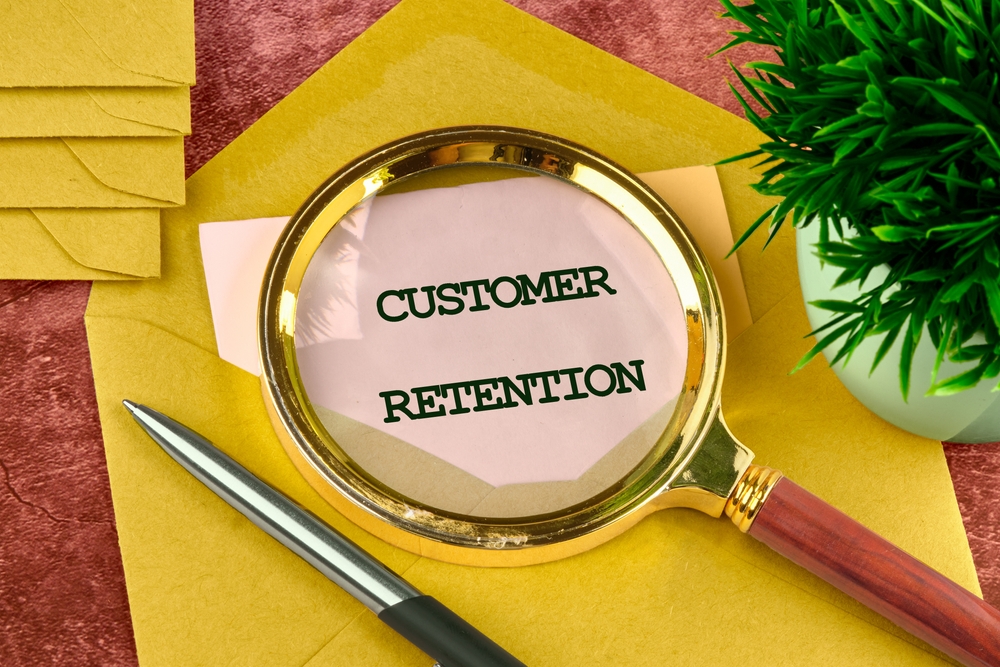Customer retention management is essential for long-term business success. While acquiring new customers is important, keeping existing customers engaged and satisfied leads to sustainable growth. A well-executed customer retention plan increases profitability and fosters brand loyalty, making customers more likely to return and advocate for your business.
Effective customer retention strategies ensure businesses reduce churn, improve customer lifetime value, and build meaningful relationships with their audience. This guide explores key strategies and metrics to develop a strong retention framework that keeps customers returning.
Understanding Customer Retention Management
Customer retention management refers to businesses’ strategies and actions to retain customers over time. It differs from customer acquisition, which focuses on attracting new customers. Retention prioritizes nurturing existing relationships to increase repeat purchases and brand advocacy.
Studies show that increasing customer retention rates by just 5% can boost profits by 25% to 95%. Moreover, acquiring a new customer can cost five times more than retaining an existing one. Businesses focusing on retention experience steady revenue growth and stronger customer trust, leading to long-term success.
The Cost of Customer Churn: Why Retention Matters
Customer churn—the rate at which customers stop doing business with a company—directly impacts profitability. High churn rates indicate dissatisfied customers, poor engagement, or ineffective retention efforts.
Losing customers results in lost revenue and increases acquisition costs. Research suggests that improving retention rates is more cost-effective than continuously acquiring new customers. For example, subscription-based companies implementing proactive engagement strategies experience lower churn and higher lifetime customer value.
Companies like Amazon and Apple have reduced churn by prioritizing personalized experiences, loyalty programs, and excellent customer service. These businesses demonstrate that focusing on retention leads to sustained growth and customer satisfaction.
Proven Customer Retention Strategies That Work
Developing an effective customer retention plan involves implementing various strategies to enhance engagement, satisfaction, and loyalty. Below are some of the most effective customer retention strategies.
1. Personalization and Customer Experience
Customers expect personalized experiences that cater to their preferences and needs. Businesses leveraging AI, CRM systems, and data analytics can provide tailored recommendations, customized emails, and exclusive offers. Companies can anticipate needs by analyzing customer behavior and purchase history and offer proactive solutions.
Retailers like Netflix and Spotify use data-driven personalization to enhance user experience, suggesting content based on customer behavior. Similarly, e-commerce brands utilize dynamic product recommendations to increase purchase frequency. Personalized interactions, such as birthday discounts or abandoned cart reminders, create stronger emotional connections with customers and encourage repeat business.
2. Loyalty Programs and Incentives
Loyalty programs encourage repeat business by rewarding customers for their purchases and engagement. Effective loyalty programs include:
- Point-Based Systems (e.g., Starbucks Rewards): Customers earn points for purchases, which they can redeem for discounts or free items.
- Tiered Memberships (e.g., Sephora’s Beauty Insider) – Higher spending unlocks more significant benefits and exclusive perks.
- Referral Programs (e.g., Dropbox’s referral incentives) – Encourages word-of-mouth marketing by rewarding the referrer and new customer.
Offering exclusive discounts, free products, and early access to promotions incentivizes customers to remain loyal, ultimately improving retention. Additionally, gamification techniques, such as achievement badges or milestone rewards, can make loyalty programs more engaging and effective.
3. Exceptional Customer Service
Outstanding customer service plays a crucial role in retention. Businesses should provide prompt, empathetic, and efficient support through multiple channels, including phone, email, live chat, and social media. Training customer service teams to handle inquiries professionally and resolve issues quickly ensures positive experiences.
Amazon’s customer-centric approach, which includes hassle-free returns and 24/7 support, sets a benchmark for excellent service. Businesses can implement AI chatbots for instant assistance, reducing wait times and improving response efficiency. Proactive engagement—such as following up after a purchase or offering troubleshooting assistance—helps reinforce positive customer relationships and builds trust.
4. Communication and Engagement
Consistent and meaningful communication keeps customers engaged. Businesses can use:
- Email marketing to provide personalized recommendations, reminders, and exclusive deals.
- Social media interactions to build a strong brand presence and engage with customers in real-time.
- Customer feedback loops to understand pain points and improve based on direct customer insights.
Regular engagement prevents customers from becoming disengaged and strengthens brand affinity. Companies that promptly respond to customer reviews, comments, and messages show they value their customers, fostering long-term relationships.
5. Community Building and Brand Advocacy
Creating a loyal customer community fosters brand advocacy. Encouraging user-generated content, social media engagement, and customer testimonials helps strengthen brand trust.
Brands like Harley-Davidson and Lululemon leverage community-building initiatives to connect with customers, turning them into brand ambassadors who actively promote their products. Hosting exclusive online forums, organizing customer appreciation events, and running brand ambassador programs create a sense of belonging, increasing customer retention.
6. Continuous Value Addition
Businesses should consistently deliver value beyond their core offerings. Providing educational content, webinars, and industry insights keeps customers engaged and positions the brand as a trusted resource.
For example, HubSpot offers free marketing resources and training, ensuring customers receive ongoing value even after purchasing their software. Offering exclusive research reports, how-to guides, or early product access can make customers feel invested in the brand, reinforcing loyalty.
Building a Customer Retention Plan: Key Components
A successful customer retention plan requires a structured approach that aligns with business goals. The following steps help create an effective strategy:
- Analyze Customer Data – Identify customer behavior patterns, preferences, and feedback. Understanding these insights allows businesses to create tailored strategies that directly address customer needs and expectations.
- Segment Customers – Group customers based on demographics, purchase history, and engagement levels. Segmentation enables targeted marketing efforts, ensuring each customer group receives relevant messaging and offers.
- Develop Personalized Retention Strategies – Tailor communication and offers for different customer segments. Personalization builds stronger connections, making customers feel valued and increasing the likelihood of repeat business.
- Implement Loyalty Programs – Introduce incentives to encourage repeat business. A well-designed loyalty program fosters customer commitment, leading to sustained engagement and higher retention rates.
- Monitor and Optimize – Continuously track retention metrics and adjust strategies accordingly. Regular evaluation helps identify trends, measure effectiveness, and implement improvements that enhance the overall customer experience.
Crucial Retention Metrics to Track
To evaluate the effectiveness of a customer retention strategy, businesses must track key performance indicators (KPIs). The most crucial retention metrics include the following:
1. Customer Churn Rate
Measures the percentage of customers lost over a given period. A high churn rate indicates dissatisfaction and requires immediate intervention. Businesses can reduce churn by improving customer service, offering personalized incentives, and addressing customer pain points proactively.
2. Customer Lifetime Value (CLV)
Determines the total revenue a customer generates throughout their relationship with a business. Increasing CLV signifies stronger retention and profitability. Companies can maximize CLV by implementing loyalty programs, upselling complementary products, and enhancing the customer experience.
3. Net Promoter Score (NPS)
Assesses customer loyalty and likelihood to recommend a brand. A high NPS reflects intense customer satisfaction and advocacy. Encouraging customer feedback, resolving issues promptly, and creating positive brand experiences contribute to improving NPS.
4. Repeat Purchase Rate
Tracks the percentage of customers who make multiple purchases, indicating strong brand loyalty. Offering personalized recommendations, exclusive deals, and seamless purchasing experiences can boost repeat purchases.
5. Customer Satisfaction Score (CSAT)
Gauges customer happiness based on direct feedback from surveys and interactions. High CSAT scores indicate that customers are pleased with the product or service, leading to increased retention. Businesses can improve CSAT by actively addressing concerns, providing high-quality products, and maintaining excellent service.
6. Engagement Metrics
These metrics include social media interactions, email open rates, and survey participation. High engagement signifies an active and loyal customer base. Strong engagement can be fostered by regularly updating content, maintaining consistent communication, and creating interactive experiences that resonate with customers.
Emerging Trends in Customer Retention Strategies
As customer expectations evolve, businesses must stay ahead by adopting innovative retention strategies. Emerging trends include:
- AI and Predictive Analytics: AI-driven customer insights help businesses anticipate needs and offer proactive solutions before customers disengage. By leveraging machine learning and data analytics, companies can more effectively predict customer behavior, optimize engagement timing, and make personalized recommendations.
- Omnichannel Experience: Seamless integration across digital and physical touchpoints ensures a consistent brand experience. Customers expect a smooth transition between online shopping, in-store visits, mobile apps, and social media interactions, making it crucial for brands to create a cohesive and intuitive experience.
- Subscription and Membership Models: More businesses are introducing exclusive memberships to create long-term customer commitment. Subscription-based models, such as Amazon Prime and Netflix, encourage recurring engagement by offering perks like free shipping, exclusive discounts, or premium content access, ensuring continued customer interest.
- Sustainability and Corporate Responsibility: Consumers increasingly favor brands prioritizing ethical business practices, sustainability, and social responsibility. Companies adopting eco-friendly packaging, transparent sourcing, and socially conscious initiatives appeal to modern customers who align their purchasing decisions with personal values.
- Enhanced Personalization: Hyper-personalization, powered by real-time data, creates more relevant and engaging customer interactions. Businesses use AI-driven content curation, behavioral analysis, and dynamic pricing to tailor their offerings, ensuring customers receive customized experiences that keep them engaged.
Turn Customers Into Lifelong Brand Advocates
Customer retention management is the foundation of sustainable business growth. Companies prioritizing retention see higher profitability, stronger customer relationships, and increased brand advocacy.
Businesses can significantly reduce churn and maximize customer lifetime value by implementing a strategic approach incorporating personalized engagement, targeted loyalty programs, and proactive communication. Additionally, tracking key retention metrics ensures companies can refine their strategies to remain competitive in a rapidly evolving marketplace.
At Signature, we specialize in direct marketing solutions that drive customer engagement and retention. Our expert strategies help businesses cultivate lasting relationships, enhance customer loyalty, and create meaningful brand experiences.
Don’t let valuable customers slip away—get in touch with our team to elevate your retention strategies and build a customer base that stays for the long run!





